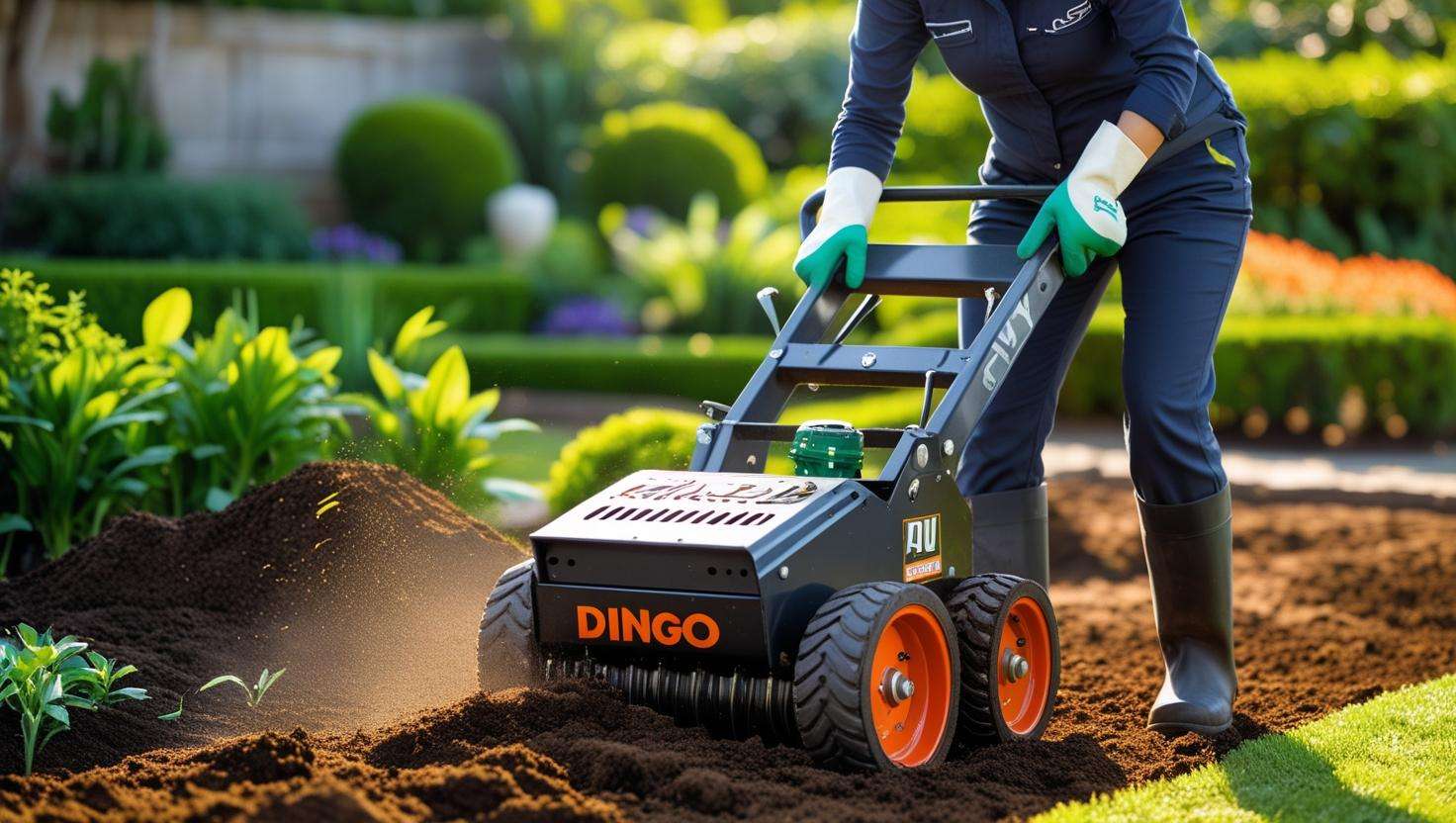
How to Choose the Best Dingo Soil Cultivator for Efficient Landscaping and Garden Preparation
Are you tired of spending hours manually turning soil for your garden or landscaping projects? 🌱 The right tools can make all the difference, and a Dingo Soil Cultivator might be the game-changer you need! Whether you’re preparing your garden for planting or tackling larger landscaping tasks, using the correct equipment can save you time, energy, and frustration.
But with so many options on the market, how do you choose the best Dingo Soil Cultivator for your specific needs? 🤔 From varying sizes to different features, selecting the right model can feel overwhelming, especially if you’re new to landscaping or soil preparation.
In this article, we’ll break down everything you need to know about Dingo Soil Cultivators—how they work, what to look for, and how to find the one that will help you achieve the perfect garden or landscape with ease. Keep reading to discover how to streamline your work and create a lush, thriving outdoor space with the perfect tool! 🌻
Table of Contents
Toggle1: What is a Dingo Soil Cultivator?
If you’re looking to make gardening and landscaping tasks faster and easier, a Dingo Soil Cultivator might be exactly what you need! But what exactly is it? 🤔
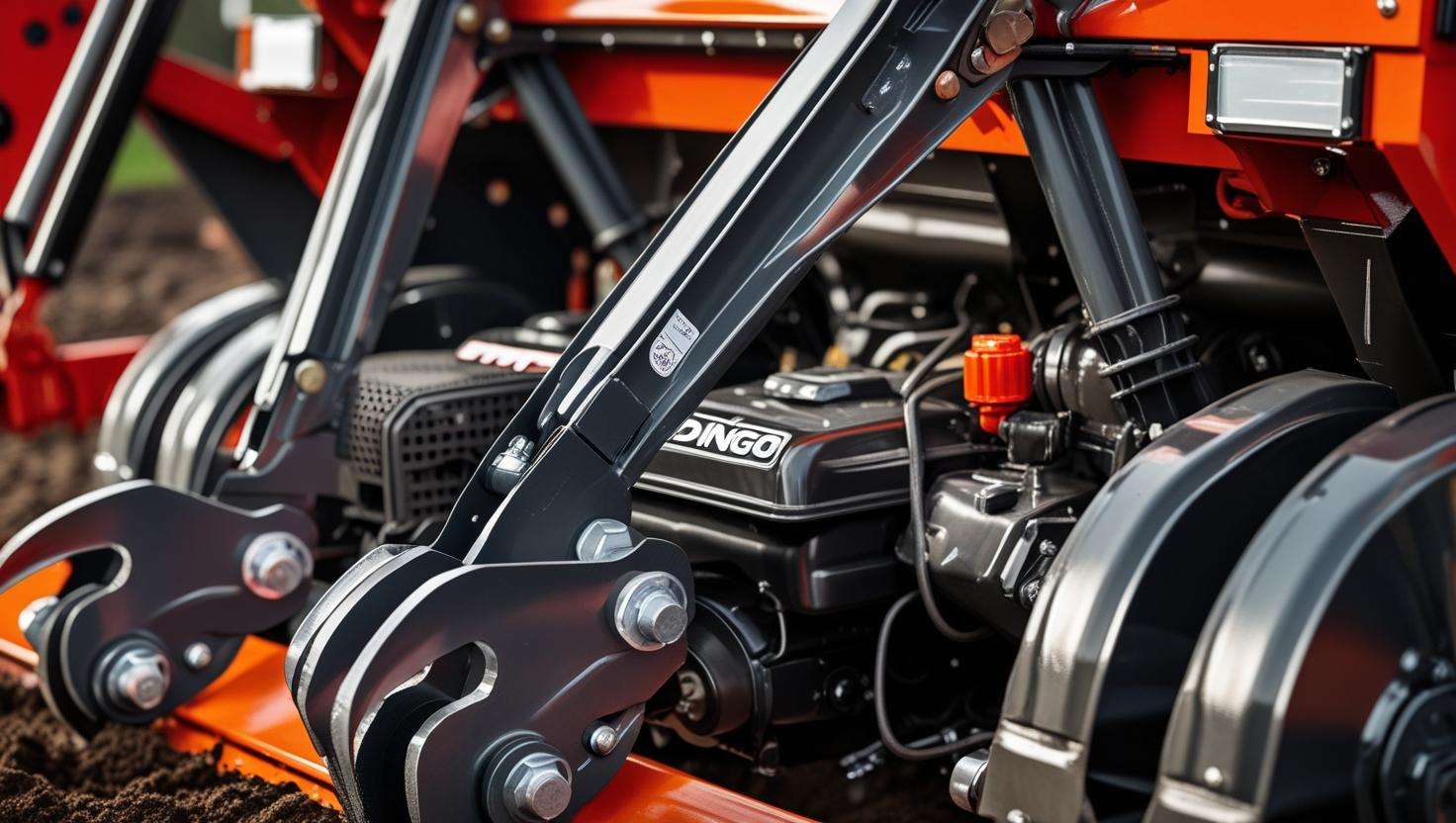
A Dingo Soil Cultivator is a versatile, heavy-duty tool designed to help you prepare soil efficiently. It’s often used by landscapers, gardeners, and contractors to break up compacted soil, till garden beds, and create a smooth surface for planting. Unlike manual tools like shovels or small tillers, a Dingo cultivator can cover large areas quickly, saving you time and physical effort. 🌱
Key Features:
- Compact yet Powerful: The Dingo Soil Cultivator is typically small enough to maneuver easily but has the power to handle tougher soil conditions.
- Multiple Attachments: It often comes with various attachments like augers and tillers, which can be swapped depending on the task at hand. This makes it perfect for everything from basic soil preparation to more complex landscaping projects.
- Tracked Design: Many Dingo cultivators feature a tracked system, giving them superior stability on rough or uneven ground. This allows for smoother operation and better control.
Why Choose a Dingo Soil Cultivator?
- Efficient Soil Preparation: Whether you’re working on a small garden or a large landscaping project, this tool makes soil preparation much faster. No more breaking your back with a hand rake!
- Ideal for Tough Terrains: A Dingo cultivator is great for hard, compacted soil or rocky areas, where regular tillers or manual labor just won’t cut it. 💪
- Easy to Use: Even if you’re a beginner, the Dingo Soil Cultivator is designed to be user-friendly. You’ll get the job done with minimal effort, while still achieving professional-quality results.
In the next sections, we’ll dive into how to choose the best Dingo Soil Cultivator based on your needs and project size. Keep reading to find out how you can level up your gardening game with this powerful tool! 🌻
2: Benefits of Using a Dingo Soil Cultivator for Your Garden
A Dingo Soil Cultivator is a powerful tool that can transform your gardening and landscaping tasks. Whether you’re prepping a small garden bed or tackling a large landscaping project, this versatile machine offers several key benefits that can make your work much easier and more efficient. Here’s why a Dingo Soil Cultivator is an absolute game-changer for your garden:
1. Time and Effort Savings ⏱️
One of the biggest advantages of using a Dingo Soil Cultivator is the massive time-saving it offers. Preparing soil by hand can take hours, especially in larger areas. With a Dingo Soil Cultivator, you can cover more ground in a fraction of the time. The machine’s efficient tilling capabilities allow you to quickly break up compacted soil, making your garden prep faster and less physically demanding.
2. Improved Soil Quality and Aeration 🌱
Proper soil aeration is crucial for healthy plant growth. A Dingo Soil Cultivator loosens the soil and improves its structure by breaking up hard, compacted areas. This results in better air circulation, water infiltration, and nutrient absorption, which are essential for strong, thriving plants. Whether you’re preparing a vegetable garden or laying the groundwork for a new lawn, your soil will benefit from the improved texture and health after using a cultivator.
3. Versatility for Different Projects 🔧
No two gardening or landscaping projects are the same, and a Dingo Soil Cultivator can handle a wide range of tasks. From breaking up tough soil to creating neat garden rows or mixing compost, this tool adapts to different needs. Whether you’re leveling uneven ground, creating seedbeds, or prepping large plots for new plants, a Dingo Soil Cultivator can tackle it all with ease.
4. Ideal for Both Small and Large Areas 🌍
Another great benefit of a Dingo Soil Cultivator is its ability to work in both small and large areas. While small gardens can be easily managed with handheld tools, larger properties or commercial landscaping projects require something more powerful. The Dingo Soil Cultivator offers just the right balance of size and power, making it suitable for a wide range of garden sizes—whether you’re working in your backyard or on a large landscaping job.
5. Ease of Use for Beginners 🛠️
Worried that a Dingo Soil Cultivator might be too complicated to use? Don’t be! These tools are designed to be beginner-friendly, with intuitive controls and simple operation. Even if you’re new to gardening or landscaping, you can get the hang of it quickly. With minimal training, you’ll be able to harness the power of the Dingo Soil Cultivator to prepare your garden in no time. Plus, the lightweight models available make handling much easier than you might expect!
6. Reduced Physical Strain 💪
Garden work can be physically demanding, especially when digging and tilling the soil by hand. Using a Dingo Soil Cultivator reduces the physical strain on your body. Instead of spending hours bent over or lifting heavy loads of soil, you can rely on the machine to do the hard work. This means less back pain and fatigue, leaving you feeling fresh and ready to tackle the rest of your gardening tasks.
In summary, using a Dingo Soil Cultivator not only speeds up your work but also improves the quality of your soil and makes garden prep much more manageable. With its versatility, ease of use, and ability to handle a variety of tasks, it’s an essential tool for both beginners and experienced gardeners alike. Whether you’re maintaining a small garden or taking on larger landscaping projects, the Dingo Soil Cultivator can help you get the job done efficiently and effectively.
3: Key Features to Look for in a Dingo Soil Cultivator
When selecting a Dingo Soil Cultivator, it’s essential to focus on a few key features that will make your landscaping and gardening tasks easier and more efficient. Here are the top things to consider when choosing the right one for your needs:
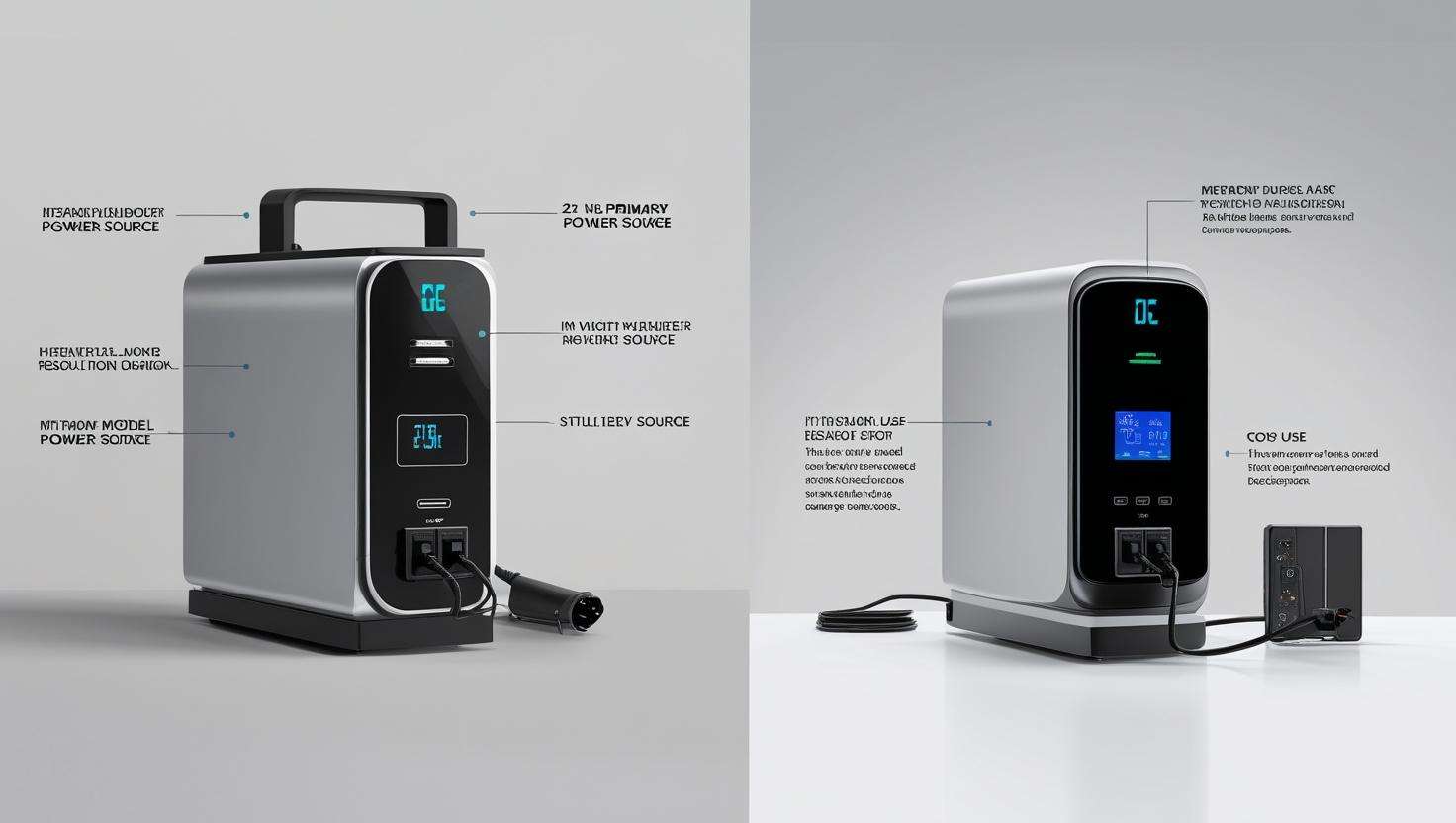
1. Engine Power and Performance 💪
The engine is the heart of any cultivator. When choosing a Dingo Soil Cultivator, you’ll want to pay attention to the horsepower. A more powerful engine helps the cultivator cut through tough soil and weeds with ease.
- What to look for: Typically, cultivators with engines in the range of 5 to 8 horsepower are perfect for small to medium gardens. If you have large or compacted areas to work on, you might need a model with more power (10+ horsepower).
- Why it matters: Higher horsepower ensures that the machine can handle tough soil, saving you time and effort.
2. Tilling Width and Depth 🌿
The tilling width and depth determine how much area you can cover in one pass and how deep you can work the soil. These factors impact efficiency, especially for larger landscaping jobs.
- Tilling Width: A wider width (12 to 20 inches) allows you to cover more ground quickly. If you have a large garden or need to work over extensive areas, go for a wider model.
- Tilling Depth: The deeper the cultivator can till, the better it will break up compacted soil and help plant roots penetrate deeper. Depths between 4 to 6 inches are ideal for most gardens, but some models can go as deep as 8 inches for tough soil.
- Why it matters: The right tilling width and depth will speed up your work and ensure you get the proper soil aeration.
3. Durability and Build Quality 🛠️
A cultivator is an investment, so it’s important to choose one that is built to last. Look for models made from high-quality materials like steel and aluminum to ensure longevity and resistance to wear and tear.
- What to look for: Check if the cultivator has reinforced parts, heavy-duty wheels, and a sturdy frame. A well-built model will be able to handle rough terrain and frequent use without breaking down.
- Why it matters: A durable cultivator will not only last longer but will also give you better value for money over time.
4. Weight and Maneuverability 🚜
While you want a solid, durable machine, you also need something that’s easy to maneuver. Consider the weight of the cultivator—models that are too heavy may be difficult to handle, especially in tight spaces or for users who aren’t as strong.
- What to look for: Choose a model that balances power and weight. Lightweight cultivators are easier to handle, but make sure they still offer the necessary power for your tasks.
- Why it matters: A lighter cultivator is easier to move around your garden, reducing fatigue during long sessions.
5. Fuel Type: Gas vs. Electric ⛽⚡
Dingo Soil Cultivators come in both gas-powered and electric models. Your choice between gas or electric will depend on your needs and preferences.
- Gas-Powered Models: These offer more power and flexibility, especially for larger gardens. They’re ideal for heavy-duty work but require more maintenance and produce emissions.
- Electric Models: Quieter, more eco-friendly, and easier to maintain. They’re great for smaller gardens and residential areas, but may not have the same power as gas models.
- Why it matters: The right fuel type will depend on your work size and environmental preferences. Gas-powered is best for large jobs, while electric works well for small, residential gardens.
6. Ease of Maintenance and Cleaning 🧼
Proper maintenance keeps your Dingo Soil Cultivator running smoothly for years to come. Look for models that are easy to clean, maintain, and repair.
- What to look for: Features like easy-access air filters, simple fuel tank access, and parts that can be easily cleaned or replaced.
- Why it matters: A cultivator that’s easy to maintain will save you time and effort in the long run, keeping it in top working condition.
4: How to Choose the Best Dingo Soil Cultivator for Your Needs
Choosing the right Dingo Soil Cultivator is key to making your landscaping or garden preparation project easier, faster, and more efficient. With a variety of models available, it’s essential to select one that fits your specific needs. Here’s a step-by-step guide to help you make the best choice:
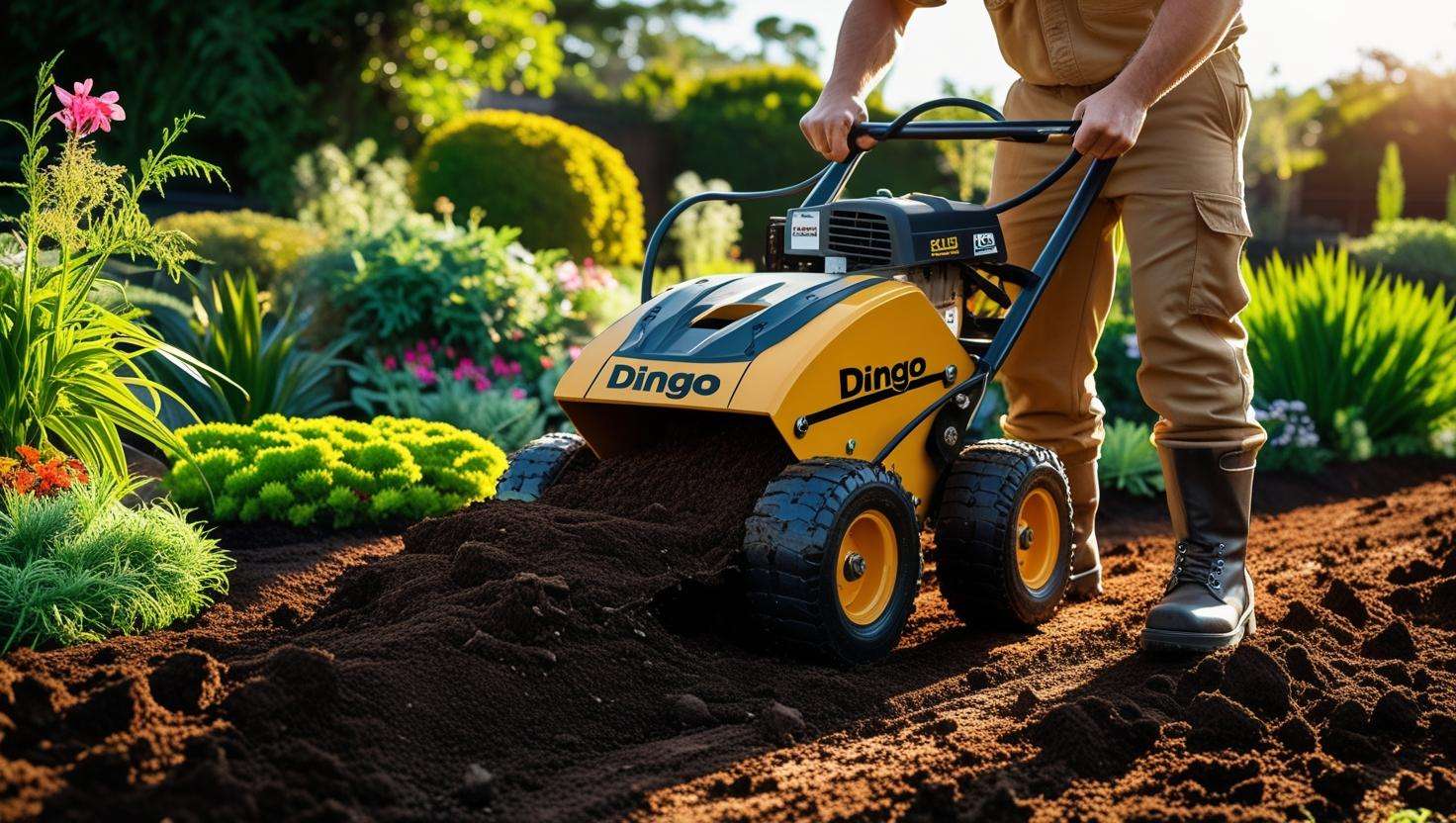
1. Define Your Needs: Garden Size and Project Type 🌿
Start by assessing your garden or landscaping area. Are you working on a small flower bed or a larger lawn that needs extensive soil work? The size and scale of your project will help determine which Dingo Soil Cultivator is best for you.
- Small Gardens: If you have a smaller garden, a compact model with a narrower tilling width is ideal. These are lightweight and easier to maneuver around tight spaces.
- Larger Landscaping Projects: For larger areas or heavy-duty work, you’ll need a more powerful cultivator with a wider tilling width to cover more ground quickly.
2. Consider the Terrain and Soil Type 🌍
Your soil type plays a significant role in the cultivator you choose. Different cultivators are designed for specific soil conditions. Here’s what to keep in mind:
- Clay or Rocky Soil: Opt for a model with stronger tines and higher horsepower to break through compacted or rocky soil.
- Sandy or Loamy Soil: If your soil is lighter and easier to work with, you can go for a less powerful, more maneuverable model.
Make sure the cultivator you choose can handle the terrain and soil texture you’re working with!
3. Evaluate Engine Power: Gas vs. Electric ⚡️
The type of engine can affect both performance and convenience. Here’s how to choose between gas-powered and electric models:
- Gas-Powered Models: Ideal for heavy-duty tasks and larger areas. They offer more power, making them perfect for tough soils. However, they require more maintenance and produce emissions.
- Electric Models: These are quieter, require less maintenance, and are eco-friendly. They’re great for smaller gardens and less challenging tasks, but may not have the same power as gas models.
Consider how much power you’ll need based on your project’s demands.
4. Size and Maneuverability 🤸♂️
While power is essential, ease of use is just as important. A heavier cultivator might offer more power but can be harder to maneuver, especially for beginners.
- Lightweight Models: If you’re new to using a cultivator or plan to use it frequently, look for a lightweight model. These are easier to control and don’t wear you out as quickly.
- Larger, More Powerful Models: If you have a larger yard or garden, a heavier model with a bigger engine may be the best fit. Just ensure you’re comfortable handling it.
5. Tilling Width and Depth 📏
Tilling width and depth determine how much soil you can cover at once and how deeply the cultivator can work the ground. Here’s what to look for:
- Narrower Width (up to 18 inches): Great for small garden beds or tight areas.
- Wider Width (18–24 inches): Ideal for larger areas, providing more coverage and saving you time.
For depth, most cultivators can till 3 to 6 inches deep, which is sufficient for most gardening tasks. However, if you’re preparing soil for larger plants or need to break up tough, compacted soil, look for a model with a deeper tilling depth.
6. Maintenance and Durability 🛠️
You’ll want a cultivator that can stand the test of time. Look for one with durable components like high-quality tines and a robust frame. Additionally, consider how easy it is to maintain and clean:
- Maintenance Tips: Make sure the engine is easy to maintain and check for any special cleaning requirements.
- Durability: Models made with strong, weather-resistant materials are less likely to wear down quickly, saving you money in the long run.
7. Budget and Value 💰
Your budget is a key factor when choosing the right cultivator. While it might be tempting to go for the cheapest option, remember that you’re investing in a tool that should last for years and perform well in your landscaping tasks.
- Affordable Models: If you’re just starting or have a small garden, you don’t need to break the bank. Look for budget-friendly models with good performance.
- Premium Models: If you’re tackling larger projects or need extra power, consider investing in a higher-end model that offers better performance and durability.
8. Try Before You Buy (Rental Option) 🚜
If you’re unsure about which model is best for you, many stores offer rentals. This is a great way to test different cultivators before making a purchase. Renting allows you to assess the comfort, power, and ease of use, helping you make a more informed decision.
5.Top Dingo Soil Cultivators on the Market
Choosing the best Dingo Soil Cultivator can feel overwhelming, especially with so many options available. To make your decision easier, we’ve rounded up the top models on the market, highlighting their key features, pros, and cons. This will help you pick the perfect cultivator for your landscaping and gardening needs. Let’s dive in! 🌱
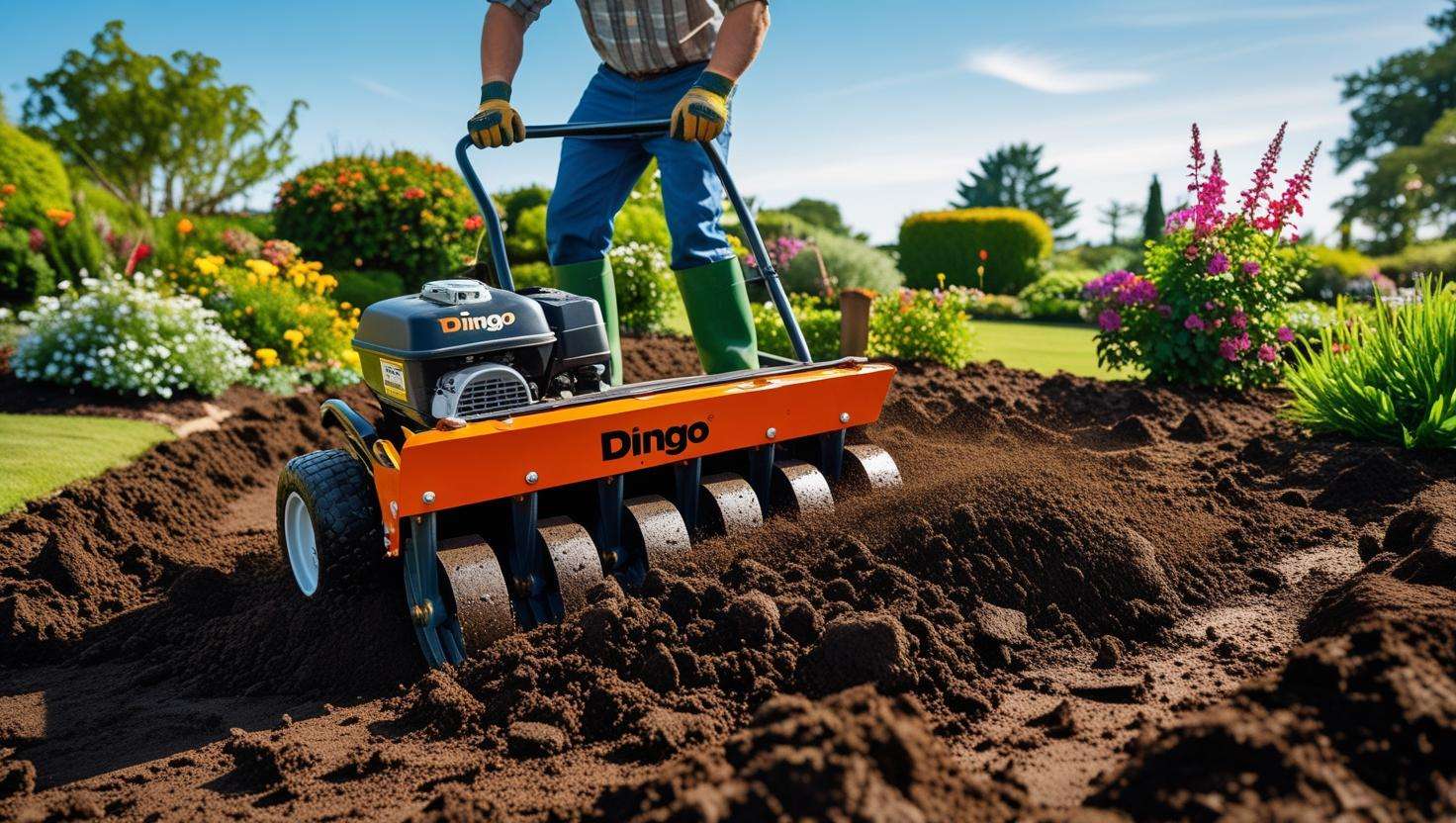
1. Dingo TX 1000
Key Features:
- Powerful Engine: 24.8 HP, perfect for heavy-duty projects.
- Tilling Depth: Up to 6 inches for deep soil aeration.
- Compact Size: Easy to maneuver in tight spaces.
Pros:
- Versatile: Great for both small garden beds and larger landscaping areas.
- User-Friendly: Easy to operate, even for beginners.
- Durable: Built for tough tasks, handles various soil types with ease.
Cons:
- Heavier: May be harder to maneuver for some users.
- Price: Higher cost compared to other models.
Ideal For: Homeowners with larger gardens or landscaping projects who need a powerful yet manageable machine.
2. Dingo TX 427
Key Features:
- Engine Power: 23.5 HP, ideal for medium to large projects.
- Tilling Width: 36 inches, covers a wide area.
- Heavy-Duty Tracks: Offers excellent stability on uneven terrain.
Pros:
- Efficient: Larger tilling width means less time spent cultivating.
- Stable: Great for rough, uneven terrain or slopes.
- Easy to Operate: Perfect for both DIY gardeners and professionals.
Cons:
- Size: Larger size might be harder to store in smaller spaces.
- Price: Mid to high-range price point.
Ideal For: Homeowners with medium to large gardens or those who need stability on uneven ground.
3. Dingo Kanga Loader
Key Features:
- Compact and Powerful: 19 HP engine, great for tighter areas.
- Multi-Tool Capabilities: Can be used with various attachments for different tasks.
- Lightweight: Easy to move and store.
Pros:
- Multi-Functional: Perfect for a variety of tasks beyond just soil cultivation, such as trenching or lifting.
- Easy to Maneuver: Lightweight and easy to control, making it great for smaller gardens.
- Cost-Effective: A more affordable option without compromising on performance.
Cons:
- Smaller Tilling Width: Not the best for very large areas.
- Less Power: May struggle with dense, compacted soil.
Ideal For: Gardeners who need a versatile, budget-friendly option for small to medium-sized garden spaces.
4. Dingo Mini Loader
Key Features:
- Compact Design: Small but powerful, ideal for tight spaces.
- Variable Speed: Adjustable speed settings for precision control.
- Powerful Engine: 16 HP, designed for residential use.
Pros:
- Perfect for Small Spaces: Great for urban gardens or small backyard landscapes.
- User-Friendly: Intuitive controls, easy to learn and operate.
- Affordable: Budget-friendly for home gardeners.
Cons:
- Less Power: Might not be sufficient for large-scale landscaping.
- Smaller Work Area: Limited to smaller projects.
Ideal For: Homeowners with small gardens or those looking for a low-cost, high-efficiency cultivator.
5. Dingo Narrow Track Loader
Key Features:
- Narrow Tracks: Perfect for working in confined spaces or delicate soil conditions.
- 15 HP Engine: Adequate power for lighter, residential tasks.
- Maneuverability: Exceptional agility for tight garden corners.
Pros:
- Super Maneuverable: Works in tight, narrow spaces without damaging your garden.
- Low Impact: Gentle on soil, reducing the risk of compaction.
- Affordable: An excellent choice for home gardeners on a budget.
Cons:
- Limited Power: Not suitable for very large or tough landscaping tasks.
- Smaller Tilling Depth: Only reaches a depth of 4 inches.
Ideal For: Gardeners with smaller, confined spaces, or those who need to work around delicate areas like flower beds.
How to Choose Between Models?
- For Larger Projects: If you have a big garden or need to work on larger landscaping tasks, the Dingo TX 1000 or TX 427 are excellent choices. They offer more power and stability.
- For Smaller, Tight Spaces: If your garden is small or you need to maneuver in narrow areas, the Dingo Mini Loader or Narrow Track Loader are perfect options.
- For Versatility: If you’re looking for a machine that can do more than just soil cultivation, the Dingo Kanga Loader is a great all-around tool.
6: Maintenance and Care Tips for Your Dingo Soil Cultivator
To ensure your Dingo Soil Cultivator continues to perform at its best, regular maintenance is key. Proper care not only extends the lifespan of your tool but also keeps it running efficiently for your landscaping and garden prep tasks. Here’s a simple guide to maintaining your Dingo Soil Cultivator, even if you’re a beginner! 🚜
1. Routine Maintenance: Keep It Clean
After every use, take a few minutes to clean your Dingo Soil Cultivator. Dirt, debris, and mud can get stuck in various parts, which might affect its performance.
- Remove soil and plant matter from the tines and wheels.
- Wipe down the engine and exterior with a cloth to prevent dirt buildup.
- Check and clean the air filter to keep the engine running smoothly.
Regular cleaning prevents buildup and keeps everything working at peak performance! ✨
2. Inspect for Wear and Tear
Before each use, do a quick visual inspection of the cultivator:
- Check the tines for damage or wear. If they’re dull or broken, they may need to be replaced.
- Look at the tires and wheels for any cracks or flat spots. Replace them if necessary for smooth operation.
- Inspect the belts for signs of wear. If they’re frayed or loose, they might need adjustment or replacement.
Early detection of issues saves you from more costly repairs down the road! 🔍
3. Engine and Fuel Maintenance
For gas-powered models, fuel care is crucial for reliable performance:
- Use fresh, clean fuel to prevent clogging and poor engine performance.
- Drain old fuel before storing your cultivator for long periods, as stale fuel can damage the engine.
- Check the spark plug for corrosion or wear. Clean or replace it regularly to keep the engine firing smoothly.
For electric models, ensure the battery is charged and connections are clean for maximum power. 🔋
4. Seasonal Maintenance: Get Ready for the Off-Season
At the end of the season, it’s essential to prepare your cultivator for storage to prevent any issues when you bring it out next time:
- Clean thoroughly to remove any lingering dirt or debris.
- Change the oil (if applicable) to prevent old oil from causing engine trouble.
- Store in a dry place to avoid rust or moisture damage. A shed or garage is perfect!
Taking these steps ensures that when you’re ready to use your cultivator again, it’s good as new! ❄️
5. Troubleshooting Common Issues
If your cultivator isn’t working as expected, here are a few things you can check:
- Engine not starting? Check the fuel level and make sure the spark plug is clean and properly connected.
- Poor tilling performance? Make sure the tines are sharp and free from debris. If the soil is too compact, try loosening it first.
- Unusual noises? Inspect for any loose parts or damage to the motor and tines. Tighten any bolts and replace damaged components.
Regularly addressing these minor issues will prevent them from turning into major problems! ⚙️
6. Professional Servicing
Even with regular maintenance, your Dingo Soil Cultivator may require professional servicing after heavy use or if something major goes wrong. It’s a good idea to:
- Consult the owner’s manual for manufacturer-recommended servicing intervals.
- Take the cultivator to a certified technician for a check-up every couple of years to ensure long-lasting durability.
By doing this, you’ll ensure your Dingo Soil Cultivator is always running smoothly when you need it most. ✅
Keep Your Dingo Soil Cultivator in Top Shape!
In conclusion, maintaining your Dingo Soil Cultivator is a simple but essential task that ensures it continues to perform at its best. By cleaning it after every use, inspecting for wear, and following proper fuel and engine maintenance, you can extend its lifespan and improve efficiency in all your landscaping and gardening projects. 🌱
Taking care of your cultivator not only saves you from costly repairs but also ensures that it’s always ready to tackle the next task with ease. With these tips, you can enjoy stress-free gardening and landscaping all year round. Happy cultivating! 🚜✨
Frequently Asked Questions (FAQs)
1. What is a Dingo Soil Cultivator, and how does it work?
A Dingo Soil Cultivator is a compact, motorized tool used to break up soil, making it easier to prepare garden beds or landscaping areas. It uses rotating tines or blades to loosen and aerate the soil, improving its structure for planting. It’s ideal for both small and large garden projects, saving time and effort compared to manual labor or traditional tillers.
2. How do I know which size Dingo Soil Cultivator I need?
The size of the Dingo Soil Cultivator you need depends on the size of your garden or landscaping area. For small gardens or flower beds, a smaller cultivator with a narrow tilling width is sufficient. For larger areas or heavy-duty tasks, choose a model with a wider tilling width and more powerful engine for increased efficiency.
3. Is a Dingo Soil Cultivator easy to use for beginners?
Yes! Dingo Soil Cultivators are designed for ease of use, making them suitable for beginners. They are lightweight, easy to maneuver, and often come with adjustable handles to ensure comfortable operation. Many models also feature user-friendly controls, so even if you’re new to gardening or landscaping, you can quickly get the hang of it.
4. Can a Dingo Soil Cultivator handle tough or rocky soil?
Yes, a Dingo Soil Cultivator can handle tough soil, but it’s important to choose the right model. Some cultivators are specifically designed with reinforced tines that can handle rocky or compacted soil. Make sure to check the specifications of the model you’re considering to ensure it’s suitable for the soil type in your area.
5. Should I choose a gas-powered or electric Dingo Soil Cultivator?
Choosing between a gas-powered or electric Dingo Soil Cultivator depends on your needs. Gas-powered models are more powerful, making them ideal for large areas or tough soil. Electric models are quieter, more eco-friendly, and easier to maintain, making them a great choice for small to medium-sized gardens with lighter tasks.
6. How do I maintain my Dingo Soil Cultivator?
To keep your Dingo Soil Cultivator in top shape, make sure to clean it after each use, check for wear on the tines and engine, and regularly inspect the fuel or battery. Additionally, change the oil (for gas models), clean the air filter, and store the cultivator in a dry place during the off-season. These simple steps will help extend its lifespan.
7. What are the benefits of using a Dingo Soil Cultivator over a manual tiller?
A Dingo Soil Cultivator is far more efficient than a manual tiller, saving you time and effort. It works faster, requires less physical labor, and provides more consistent results, especially on large or tough soil areas. It’s an ideal tool for achieving a well-prepared garden or landscaping area without the back-breaking work.
8. How much does a Dingo Soil Cultivator cost?
The price of a Dingo Soil Cultivator can range from $500 to over $2,000, depending on the model, size, and features. Smaller, less powerful models tend to be more affordable, while larger, heavy-duty cultivators with advanced features like enhanced tines and wider tilling widths will cost more. Be sure to compare models based on your needs and budget.
